The future of our features – migration
 Effective June 2012, our feature stories will be published on the GCP Blog.
Effective June 2012, our feature stories will be published on the GCP Blog.
Decoding the pigeonpea genome creates opportunities
- Published Date
 "The timing's neat," says Dr Jean-Marcel Ribaut, Director of the Generation Challenge Programme (GCP) of the Consultative Group on International Agricultural Research (CGIAR). "We decoded the pigeonpea genome last November, which is a great way to start 2012!"
"The timing's neat," says Dr Jean-Marcel Ribaut, Director of the Generation Challenge Programme (GCP) of the Consultative Group on International Agricultural Research (CGIAR). "We decoded the pigeonpea genome last November, which is a great way to start 2012!"
The collaborative project that sequenced the pigeonpea genome brought together 12 participating institutes operating under the umbrella of the International Initiative for Pigeonpea Genomics (IIPG). The initiative was led by Dr Rajeev K Varshney, the GCP Comparative and Applied Genomics Theme Leader. He is also Director of the Center of Excellence in Genomics (CEG) at the International Crops Research Institute for the Semi-Arid Tropics (ICRISAT). Other participants in the Initiative included the Beijing Genomics Institute (BGI) in Shenzhen, China; four universities; and five other advanced research entities, both private and public. The Plant Genome Research Program of the National Science Foundation, USA, also funded part of this research.
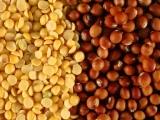
"A crop of many virtues"
"Pigeonpea, the grains of which make a highly nutritious food, is a hardy and drought-resistant crop. It is grown in the semi-arid tropics and subtropics of Asia, Africa, the Americas, and the Caribbean," explains Dr Ribaut. "Now that the project has successfully captured almost 73 percent of this crop's genome and identified 48,680 genes, new varieties can be quickly developed. This will have significant impact on resource-poor communities in the semi-arid regions because they will then have the opportunity to improve their livelihoods and increase food availability."
Dr Ribaut describes pigeonpea (Cajanus cajan (L) Millsp) as "a crop of many virtues." This ancient crop was domesticated in southern Asia, probably 3,500 years ago. Today, it feeds about 1,000 million people, most of whom are poor. Current world production is 4 million tons - worth about USD 1,500 million - and produced on 5 million hectares. India, a major consumer of this legume, grows around 85 percent of the world's production. Eastern Africa and Central America are also major producers.
"Nutritionally, both people and livestock can significantly benefit from pigeonpeas," says Dr Larry Butler, the GCP Product Delivery Theme Leader. Their high protein and amino acid contents so effectively supplement starchy staples that pigeonpeas are sometimes called the ‘poor man's meat'. This crop's prolific seed production and resistance to drought help reduce farmers' vulnerability to potential food shortages during dry periods. Agronomically, the crop is used to improve soils, serves as an intercrop, and provides windbreaks, fencing, firewood, and thatching. It also has industrial potential for flour production, canning, and lac production. Lac is a scarlet resin used as dye. It is produced by scale insects, for which pigeonpea is a host plant.
Low yields – the poor farmer's burden
Dr Ribaut mentions the current challenges of dryland environments, rapidly increasing population growth, and threats of climate change and scarce natural resources. He adds, "We cannot help but agree with Dr William Dar, Director General of ICRISAT, who observed that the ‘mapping of the pigeonpea genome is a breakthrough that could not have come at a better time!'"
Dr Butler agrees, adding that "perhaps the most important problem faced by pigeonpea farmers is low yields." He explains, "As most of these farmers are smallholders, they have few resources with which to battle crop diseases and pests, drought, and poor soils."
As a result, average world yields have stagnated over the last 50 to 60 years at between 650 to 866 kilograms per hectare. Some countries must import to make up deficits. India, for example, imports about 3 million tons of pigeonpeas annually. Prices for pigeonpeas are therefore soaring. Yet, as Dr Butler points out, "under ideal conditions, the crop can produce about 2.5 tons per hectare."
"One way of assisting resource-poor farmers is to make available pigeonpea varieties that have been improved to cope with stresses," he suggests.
The treasure in the genome
If a variety is to successfully ward off a disease or other stress, then it must have the genes to do so, points out Dr Varshney. "Like all living organisms, pigeonpea plants vary in their ability to resist stress," he explains. "For example, some pigeonpea plants cope with drought better than others. The reason they can do so is because they have genes that direct them to have, for instance, deeper, water-seeking roots, whereas other pigeonpea individuals don't have these genes."
Dr Varshney goes on to explain, "Essentially, this is what breeding is about: it is the deliberate choosing of those plants that have adaptive characteristics such as longer roots." He expounds further: "Thus, through breeding, a drought-resistant pigeonpea variety is developed, the plants of which consistently possess those particular genes that tell them to grow deep roots. This long-rooted variety is thus more likely to survive droughts."
Dr Varshney points out that the size of the pigeonpea genome is about average for legume crops, comprising 22 pairs of chromosomes. These complex microscopic bodies carry thousands of genes each. So far, 48,680 genes have been identified for pigeonpea.
"To date, 72.7 percent of the genome has been assembled. This is sufficient to enable us to change breeding approaches for pigeonpea," says Dr Varshney. "That is, we can now combine conventional and molecular breeding methods - something we couldn't do as well before - and access enough genes to create many new pigeonpea varieties that will effectively help improve the food security and livelihoods of resource-poor communities."

The genome as an effective breeding tool
"This is where the GCP's investment in the IIPG project has paid off," Dr Ribaut suggests. "Most of these types of improvements can be made, using conventional breeding techniques," he says. However, with these techniques, desirable pigeonpea varieties normally take six to ten years to develop. "This is slow delivery, when you're hungry," Dr Ribaut points out. He adds, "Modern crop improvement technologies are therefore crucial for speeding up the development of improved varieties for smallholder crops like pigeonpeas."
Another major issue is that conventional breeding efforts to improve pigeonpea varieties have been stymied by the crop's own narrow genetic diversity and lack of genetic and genomic resources. For pigeonpea, the situation was sufficiently acute for modern science to neglect the crop, despite its importance to so many millions of people in the world's dry areas. As a result, it was often called an ‘orphan crop'.
Creating the capacity to access the pigeonpea's genome is therefore a significant breakthrough, affirms Dr Varshney. "The crop is immediately ushered into the ‘molecular breeding era'," he says. He lists examples of molecular breeding approaches that can now be incorporated into breeding programmes using conventional methods: the use of ‘markers' for genetic mapping and trait identification, marker-assisted selection, marker-assisted recurrent selection, and genomic selection.
Using the genome to develop new varieties and hybrids would "considerably cut breeding time by doing away with several cropping cycles. It would most certainly reduce costs!" observes Dr Varshney. "This means new varieties would reach dryland areas of Africa and Asia more quickly, thus improving and increasing the sustainability of food production systems in these regions."
Dr Varshney warns: "We should remember, however, that, if we are to develop improved varieties, molecular techniques are not sufficient on their own." He explains, "They are basically highly effective tools that are best used together with conventional breeding techniques."

The crop is of the widely grown arhar dhal variety, also known as ‘Asha' (Hindi for ‘hope'). Its genome was sequenced by 12 partners collaborating in the International Initiative for Pigeonpea Genomics (IIPG).
The six-year project was completed in November 2011.
Research implications
"Capturing the pigeonpea genome not only has immediate humanistic benefits, but it will also further several broader research areas," says Dr Xavier Delannay, the GCP Director of Research. Examples include:
- Several genes, unique to pigeonpea, that have been identified for drought tolerance. Future research may find ways of transferring these genes to other legumes in the pigeonpea family such as soybean, cowpea, and common bean, so that these crops will also become drought resistant - a significant asset in view of the increasingly drier climates in these crops' production areas.
- Genes for other agronomically important traits can also be identified and used to enhance not only pigeonpea but other legumes too.
- Genomewide association studies can now be created to assess thousands of pigeonpea accessions held in collections around the world. The genebank at ICRISAT alone holds more than 13,600 accessions. The potential diversity of genes among these yet-to-be-studied accessions can now be explored at much lower cost and much more quickly. The chances are also higher of finding variant genes whose superiority is such that they can be used to improve not only pigeonpea but also other legumes.
- Transferring genes from the crop's close relatives, and even other, more distant, legumes to pigeonpea varieties will become more practical, thus helping to broaden the crop's genetic diversity.
- The decoding of the genome will also help clarify the roles that certain gene families have played in the evolution and domestication of pigeonpea and its ancestors and relatives.
‘Cracking the egg' twice-pigeonpea genome research by Indian scientists
The pigeonpea genome was, in fact, decoded twice. Two teams of biotechnologists working in India published their results at almost identical times. One project was the IIPG project, led by ICRISAT, and described here; and the other was led by Dr NK Singh, a senior scientist at the National Research Centre on Plant Biotechnology (NRCPB) of the Indian Council of Agriculture Research (ICAR) in New Delhi.
Speaking to the New Delhi environmental fortnightly, Down to Earth, Dr Varshney confirmed that talks, aimed at planning the use of the genome's data in breeding programmes, have already begun with ICAR and other institutes. He also expressed the hope that pigeonpea productivity will, in the very near future, improve significantly.
GCP launches communities of practice
- Published Date
The first half of 2011 has been community season at GCP.
Comprehensive discussions on the formation, expansion and management of communities of practice (CoPs) were held In February following a data management workshop held for GCP researchers in West Africa at the International Institute of Tropical Agriculture (IITA) headquarters at Ibadan, Nigeria.
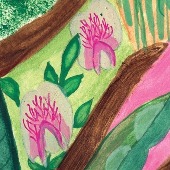 The CoP for chickpeas was launched at the 4th Tropical Legumes I annual project meeting in Madrid, Spain, at the beginning of May 2011. It is to be coordinated by Dr Pooran Gaur (ICRISAT) and mentored by Dr Teresa Millán (Universidad de Cordoba), and will initially bring together chickpea breeders and researchers from Algeria, Ethiopia, India and Kenya.
The CoP for chickpeas was launched at the 4th Tropical Legumes I annual project meeting in Madrid, Spain, at the beginning of May 2011. It is to be coordinated by Dr Pooran Gaur (ICRISAT) and mentored by Dr Teresa Millán (Universidad de Cordoba), and will initially bring together chickpea breeders and researchers from Algeria, Ethiopia, India and Kenya.
 A joint CoP for cowpeas and soya beans was launched at the Tropical Legumes II annual project meeting at IITA in mid-May 2011, with the pioneer membership drawn from Burkina Faso, Cameroon, Kenya, Malawi, Mali, Mozambique, Niger, Nigeria, Senegal, Tanzania, and USA. The CoP will be coordinated by Dr Ousmane Boukar (IITA) and mentored by Dr Jeff Ehlers (University of California-Riverside).
A joint CoP for cowpeas and soya beans was launched at the Tropical Legumes II annual project meeting at IITA in mid-May 2011, with the pioneer membership drawn from Burkina Faso, Cameroon, Kenya, Malawi, Mali, Mozambique, Niger, Nigeria, Senegal, Tanzania, and USA. The CoP will be coordinated by Dr Ousmane Boukar (IITA) and mentored by Dr Jeff Ehlers (University of California-Riverside).
At the annual Integrated Breeding Platform (IBP) project meeting in June 2011 (held at Wageningen University and Research Centre in the Netherlands) two mentors were identified for the data management CoP - Dr Arturo Franco (CIAT) and Dr Elizabeth Arnaud (Bioversity). Dr Ibnou Dieng (Africa Rice Center) and Dr Manoj Kumar Singh (National Research Centre on Plant Biotechnology/ Indian Agricultural Research Institute) will serve as co-ordinators. This CoP was launched in February 2010 at the inaugural meeting of the IBP in Hyderabad, India - with the pioneer members drawn from the user cases of the platform and the developers working on the informatics tools.
Vibrant communities of practice are an integral part of GCP's approach to capacity development in Phase II and post-GCP sustainability of the IBP. "CoPs leverage the natural human inclination to cluster with peers - we are more likely to adopt and apply what our peers have tested and can attest to," observed Dr Ndeye Ndack Diop, GCP's Theme Leader for capacity building. "We will more readily seek counsel from our peers in the confidence that they sit where we sit and will bring empathy and understanding with the solution."
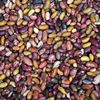 Dr Diop explained that consultations are already under way to form CoPs for beans and rice in Africa, which will build on existing breeder networks - such as the Pan-African Bean
Dr Diop explained that consultations are already under way to form CoPs for beans and rice in Africa, which will build on existing breeder networks - such as the Pan-African Bean  Research Alliance (PABRA) and its affiliate regional networks in eastern, central and southern Africa, and on the Africa Rice Breeding Task Force.
Research Alliance (PABRA) and its affiliate regional networks in eastern, central and southern Africa, and on the Africa Rice Breeding Task Force.
Other operational GCP communities of practice are one for cassava breeders in Africa and another for rice in the Mekong basin.
Related links:
- GCP's communities of practice (hosted on IBP website)
- Rice breeding community of practice in the Mekong basin (Asia)
- Legumes Research Initiative (Tropical Legumes I Project)
- Integrated Breeding Platform
Disease-resistant cassava released in Nigeria
- Published Date
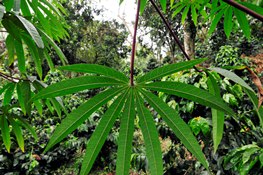 Download e-publication
Download e-publicationUmudike, Nigeria – The Generation Challenge Programme (GCP) of the Consultative Group on International Agricultural Research is pleased to announce the release of a new disease-resistant high-yielding cassava variety by one of our partners – the National Root Crops Research Institute (NRCRI) at Umudike, Nigeria, working in close collaboration with Centro Internacional de Agricultura Tropical (CIAT).
Dubbed UMUCASS33 and released in December 2010, this new variety brings together the best from South American and African cassava. South America is cassava’s centre of origin. South American cassava has a higher nutritional content, while African cassava tends to be more resilient to pests, disease and harsh environments. CIAT provided the South American cassava, while the local variety resistant to cassava mosaic disease (CMD) was developed from material obtained from the International Institute of Tropical Agriculture
| “This is a first great example of a practical application of marker technology in cassava for the selection of important new traits, and it bodes well for the future as markers get fully integrated into cassava breeding.” |
Nigeria is the world’s leading cassava producer and consumer, but yields are suboptimal, decimated by CMD, amongst other diseases, pests and problems. CMD alone routinely reduces cassava production by as much as 90 percent. Besides bringing higher yields and greater disease resistance, UMUCASS33 also broadens the genetic diversity of African cassava. “Diversity studies on cassava in Africa revealed that the genetic base is very narrow, meaning cassava can easily succumb to disease en masse,” says Dr Chiedozie Egesi, plant breeder and molecular geneticist at NCRCI. The IITA-led GCP-funded diversity studies were conducted in conjunction with selected partners in cassava-growing regions in Central, East and West Africa.

“This is an eye-opener and demonstrates the power of molecular tools, and what they can do for plant breeding.” |
“We know the pedigree of UMUCASS33, bred from the best of CIAT’s elite cassava lines using marker-assisted selection, which were then backcrossed with hardy and disease-resistant local cassava,” Dr Egesi (pictured ) reveals. “Previous efforts with pure South American cassava were unsuccessful because South American cassava could not survive in Africa, so crossing with the local variety was absolutely necessary. UMUCASS33 will provide parents for further breeding work, including for cassava green mite resistance and drought tolerance.”
Commenting on the release, Dr Xavier Delannay, GCP’s Leader for Integrated crop breeding and manager of the Cassava Research Initiative said, “This is a first great example of a practical application of marker technology in cassava for the selection of important new traits, and it bodes well for the future as markers get fully integrated into cassava breeding.”
"Cassava, a vegetatively propagated crop, is difficult to breed due to its low propensity for flowering,” adds Dr Larry Butler, GCP’s Product Delivery Leader. “Development of improved varieties is hampered by the formidable amount of time required for conventional breeding and phenotyping methods. The release of UMUCASS33 is a perfect example of how the use of molecular tools efficiently exploited the potential of divergent sources of traits, while reducing the time required for development.”
Standing tall and taste to match
|
Savanna
Forest–savanna transition
Forest and humid zones
Partners across the testing locations
|
Needless to say, farmer perspectives and preferences are an indispensable factor for any new variety to grow and spread in farmers’ fields, and researcher priorities alone are not enough. A variety may be ‘scientifically perfect’ (based on a researcher’s perspective) but fail the farmer or consumer test in terms of say, taste, texture, colour or starchiness. Failing the farmer or consumer test means farmers will not grow it. UMUCASS33, beyond its higher yields and CMD resistance, has other critical qualities that appeal to farmers in Nigeria. UMUCASS 33 has a good erect architecture: it is late in branching (forking) and does not have lateral branches. Most farmers like this plant architecture morphotype which is compatible with their cropping systems because they tend to intercrop cassava with other crops. Unlike most South American varieties that tend to fail the taste test with African farmers, UMUCASS33 is highly palatable and appeals to local preferences. Of the three cassava lines obtained from CIAT and advanced to the final stage, UMUCASS33 scored highest on all the parameters tested by both farmers and researchers. Another set of five lines from GCP-funded MAS-bred varieties (developed jointly by CIAT and NRCRI) have advanced to the final stages in Nigeria, including one already in pre-release on-farm trials since 2010, and approaching selection for official registration. MAS stands for marker-assisted selection.
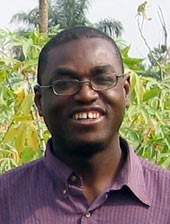
“With the help of markers, we are injecting new South American germplasm into African germplasm, which is vital for expanding the narrow genetic pool.” |
“UMUCASS33 yields as much as 40 percent more, depending on the agroecology. This percentage is even higher when compared to local unimproved landraces,” says Dr Emmanuel Okogbenin (pictured), a molecular breeder and geneticist, and the project team leader at NRCRI.
Two sides of the same coin, and passing on the baton
Tools alone will not get the job done. “Breeding is by nature collaborative work with multiple locations and partners,” observes Dr Okogbenin. In this regard, partnerships fostered through the GCP-funded project with CIAT and country partners in Africa played a major and indispensable role. The project was in two phases, with the first on development of low-cost technologies led by CIAT (2005–2007). The second phase involved the GCP-supported cassava breeders community of practice (CoP) in Africa, and was led by NRCRI (2008–2010). This second phase – among other objectives – focused on validating MAS-bred genotypes for resistance to both cassava mosaic disease (CMD) and cassava green mite (CGM), and to promote marker-assisted breeding (MAB),by building on the foundation laid by the previous project.
The pre-release trials involved multi-site trials in partnership with several research organisations, as well as on-farm adaptive trials with farmers (see box on testing locations). “We are more productive working together, and we could not have succeeded with UMUCASS33 working alone.” He adds, “Molecular breeding is not just about genotypic data. Phenotypic data are just as important. UMUCASS33 will be used to breed other improved varieties. To assess the potential for this new work, good information is mandatory to help in making the right choices of parents for breeding, and in designing the appropriate breeding scheme. Laboratory work has to go hand-in-hand with the fieldwork, and it is the combination of both that informs and underpins successful breeding.”
New horizons, new opportunities
NRCRI has a modest molecular breeding laboratory that was established in 2005 with GCP funding, with additional support from the International Atomic Energy Agency and the Nigerian government. A pioneer in Nigeria, the laboratory has served as a national reference point, demonstrating the power and potential of molecular breeding.
“I am privileged to be involved in the dramatic change in the research landscape in Nigeria, and the advent of modern approaches to breeding. The laboratory opened up a new sphere in breeding for us, introducing an intermediate critical layer between the breeder and the fieldwork,” says Dr Okogbenin. “But we cannot handle large volumes in our laboratory, and we will rely on GCP’s Integrated Breeding Platform for this.” He adds that IBP’s ability to handle high-throughput genotyping is very significant for boosting developing-country research. With its high-precision tools and services, molecular approaches greatly accelerate the breeding process, and this without the undesirable accuracy vs speed tradeoffs.
“Even though this has not been quantified, I can confidently say that with molecular breeding, NRCRI has taken a giant step forward,” Dr Okogbenin asserts. “It has completely changed our research approach. When you show a willingness to catch up with the new order in the world of plant breeding, you are more likely to be perceived as a major contributor and attractive partner in plant science research and development.” He continues, “This work in molecular breeding has opened up not only new opportunities for faster delivery of improved varieties to farmers, but also opportunities for international collaboration such as the BioCassavaPlus worldwide initiative and working with the CGIAR HarvestPlus Challenge Programme on nutrient-rich cassava.”
Going further faster together
|
On cars, cassava and the NRCRI–GCP collaboration: mobile molecular movement says it all! |
Dr Egesi adds that the Economic Community of West African States (ECOWAS) is developing new seed systems whereby member countries will participate in – and benefit from – the development of new crop varieties at subregional level. “Under this new ECOWAS mechanism, once a variety is released in, say Nigeria for example, countries with similar agroecological zones only need to apply for local release without undergoing local testing,” he says. This new development will contribute to the pan-African Programme for African Seed Systems (PASS), coordinated by the Alliance for a Green Revolution in Africa (AGRA).
What next, and the missing link
Researchers in the developing world sometimes find themselves facing a yawning gap in the research–development continuum. “The story does not end with successfully identifying promising varieties on-station and in farmers’ fields. In fact, that is sometimes the very beginning,” Dr Egesi observes. Government funding is not always forthcoming for the mandatory national performance trials, while most project funding does not extend downstream to these types of trials. Yet no variety can be released without these trials. In the absence of funding for this final link, viable varieties sometimes end up trapped on the shelf and fail to reach the farmers who need them. Such undesirable situations easily negate all the considerable upstream investments and efforts in marker-assisted selection and related costs.
Initiatives such as the new ECOWAS regional release above will go some way towards alleviating the problem by minimising unnecessary duplication of efforts in pre-release testing, but the difficulty of initial release still remains. Besides Ghana, UMUCASS33 would also thrive in Côte d’Ivoire and Togo, which are both ECOWAS members.
The bottleneck of initial release can also be partially overcome. “Product delivery is very high on our agenda in Phase II.” says Dr Jean-Marcel Ribaut, the GCP Director. “We have set aside some modest supplementary funds dedicated to packaging products from GCP-funded research to move them further down the research–development pathway to the next set of users. As such, GCP would be willing to consider funding national performance trials for priority cases, to ensure that promising pre-release improved varieties reach the farmers who need them.”
For more information:
- Contact This email address is being protected from spambots. You need JavaScript enabled to view it. or This email address is being protected from spambots. You need JavaScript enabled to view it. (National Root Crops Research Institute)
 Facts and figures on UMUCASS 33: based on Technical Subcommittee (TSC) descriptors of Nigeria’s National Variety Release Committee. UMUCASS33hotos on 2nd page
Facts and figures on UMUCASS 33: based on Technical Subcommittee (TSC) descriptors of Nigeria’s National Variety Release Committee. UMUCASS33hotos on 2nd page
- Published Date
Breeders in formation
Nurturing a new generation of African cassava breeders
Download E-publication
|
For the African cassava breeders Community of Practice (CoP) supported by the CGIAR Generation Challenge Programme (GCP), capacity development is important. “Capacity building is critical for the CoP, especially to use the products coming from GCP,” says Emmanuel Okogbenin, the CoP Coordinator. He adds, “The common adage that people are the most important asset is not quite true. The right people are your most important asset. People with the appropriate knowledge, skills and attitudes.” The cassava CoP walks this talk. Meet the postgraduate students funded by GCP working on cassava in Africa in the four CoP target countries (Ghana, Nigeria, Tanzania and Uganda). |
Ghana
 Bright Boakye Peprah, 28
Bright Boakye Peprah, 28
Back to basics to get it right
• Crops Research Institute, Ghana
• MSc student: genotype-by-environment effects on improved varieties, Department of Crop Science, University of Ghana
• Enrolled in 2008, through the CoP
“If I graduate this year, I hope to contribute to the release of a variety to farmers within three to four years. One size does not fit all. In the forest zone, farmers are interested in poundability, while the coastal savannah farmers favour gari, and the forest transition zone farmers are interested in commercial production.”
 Ruth Prempeh, 33
Ruth Prempeh, 33
Saving the harvest
• Crops Research Institute, Ghana
• PhD student: cassava breeding to delay postharvest physiological deterioration (PPD), WACCI, University of Ghana
• Enrolled in 2009, through the GCP–WACCI programme
“Preservation is core. Even if you have all the other good traits but the crop cannot be preserved, then all is lost. There could be a link between beta-carotene and a longer shelf life for cassava. In all, molecular markers would greatly hasten my study. I’m also assessing farmer-preferred varieties to determine whether they possess delayed PPD.”
 Joseph Adjebeng Danquah, 31
Joseph Adjebeng Danquah, 31
A crying need in the North
• Savannah Agricultural Research Institute, Ghana
• PhD student: breeding cassava for drought tolerance, WACCI, University of
Ghana
• Enrolled in 2010, through the GCP–WACCI programme
“It is important to move away from the all too common notion that cassava is an ‘anywhere, anyhow’ crop. Cassava’s natural capacity to withstand drought also needs a boost to improve yields in drylands. My goal is to work on adapting cassava for drylands in the North where there is a great need, because most of the existing varieties have been developed for the South.”
Nigeria
 Bunmi Olasanmi, 36
Bunmi Olasanmi, 36
Accelerating the time track: further and faster for all
• National Root and Tuber Crops Research Institute (NRCRI), Nigeria
• PhD student working on QTLs for early maturity for cassava, University of Ibadan
Nigeria
• Set to graduate in 2010. Enrolled through the CoP
“Due to limited land resources and a long breeding cycle, the need for cassava with the highest yields per unit time and in unit space is critical. Given that yield is a quantitative trait that is difficult to measure and predict, the development and use of QTLs in breeding for the trait will make improvement for earliness in cassava a faster reality. We have identified major QTLs to be shared with the global cassava breeding community.”
Tanzania
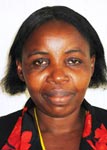 Bernedetha Kimata, 46
Bernedetha Kimata, 46
Marking up the root cause
• Agricultural Research Institute – Sugarcane Research Institute, Kibaha, Tanzania
• MSc student in plant breeding, Egerton University, Kenya
• Enrolled in 2009, through the CoP
“My aim is to develop CBSD mapping population phenotype progenies, and to validate markers of both the progenies and the parents. If SNP makers were available, they would be my preference.”
Uganda
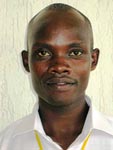
Williams Esuma, 27
What’s in a colour? Plenty!
• National Crop Resources Research Institute (NaCRRI)
• MSc student in crop science, focusing on genetic diversity of yellow-root cassava germplasm in Uganda, Makerere University, Uganda
• Enrolled in 2009, through the CoP
“Beta-carotene is what accounts for the yellow colour in cassava. Once we know the genetic diversity of yellow-root cassava, we will be able to select the right parents to make appropriate crosses. I will use molecular breeding approaches, first at Biosciences Eastern and Central Africa (BecA) for the marker work, then at Makerere for the biochemical analysis of beta-carotene degradation.”
Links
• The cassava community of practice (IBP website)
• A cross-continental coalition on cassava in Africa
• East to West: Country perspectives on cassava in Africa



